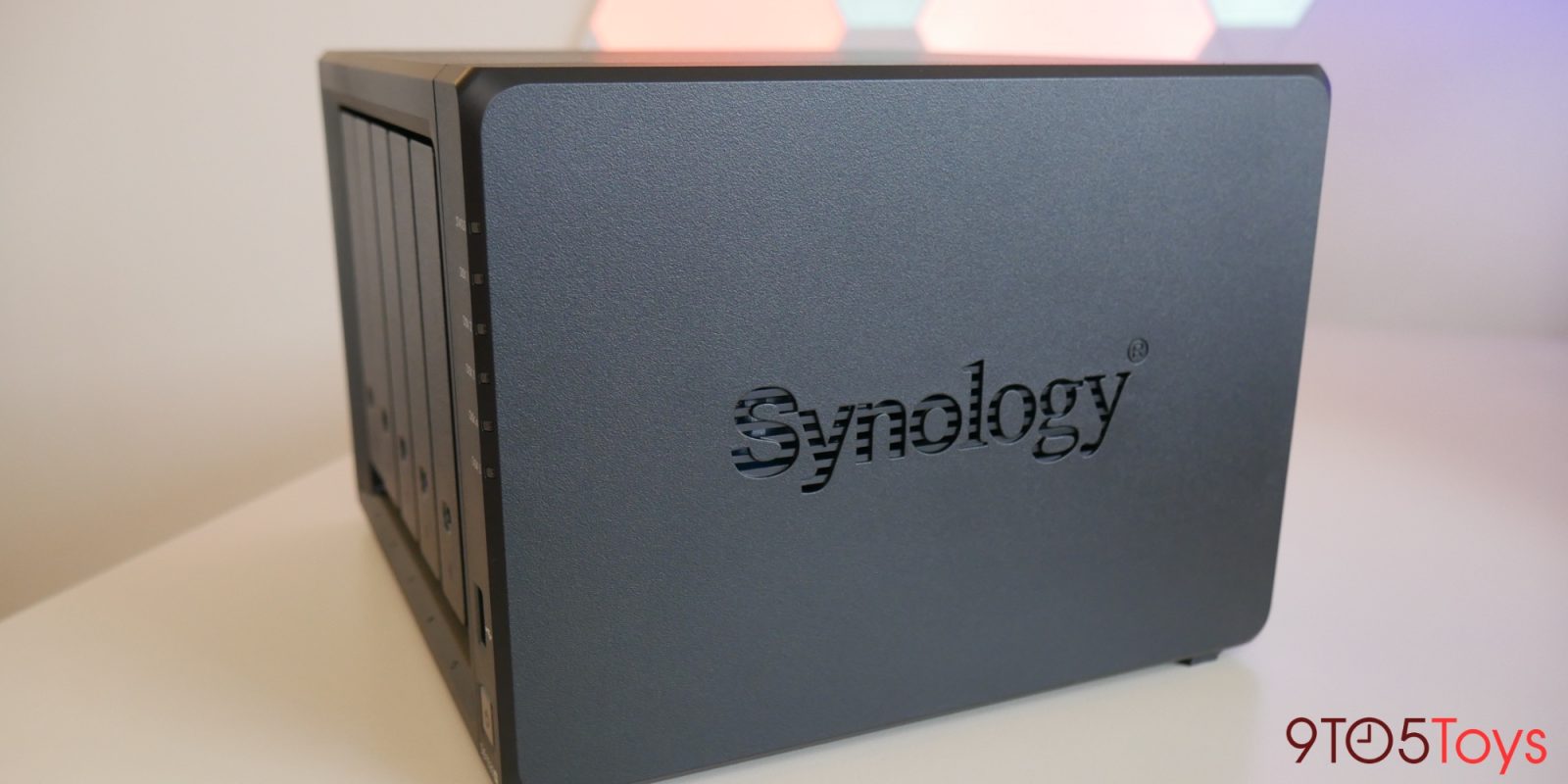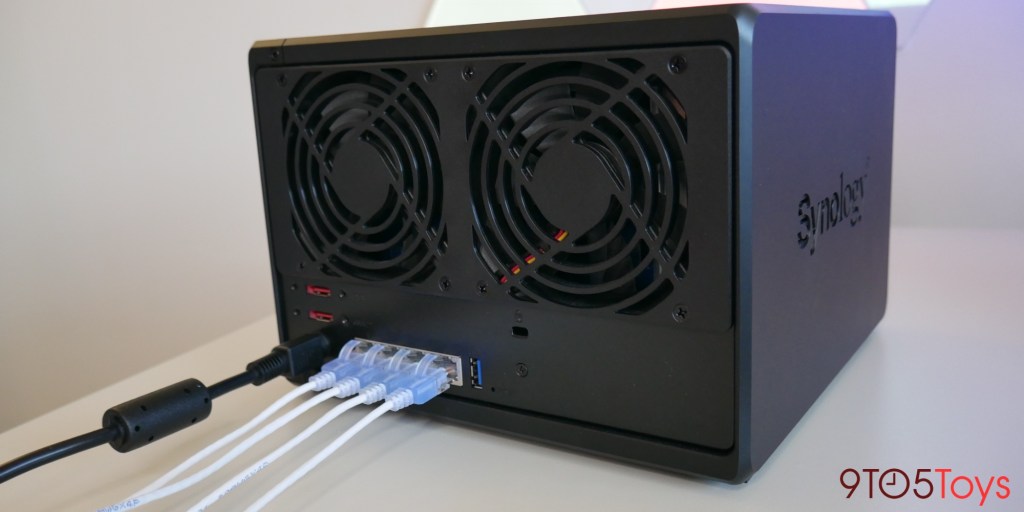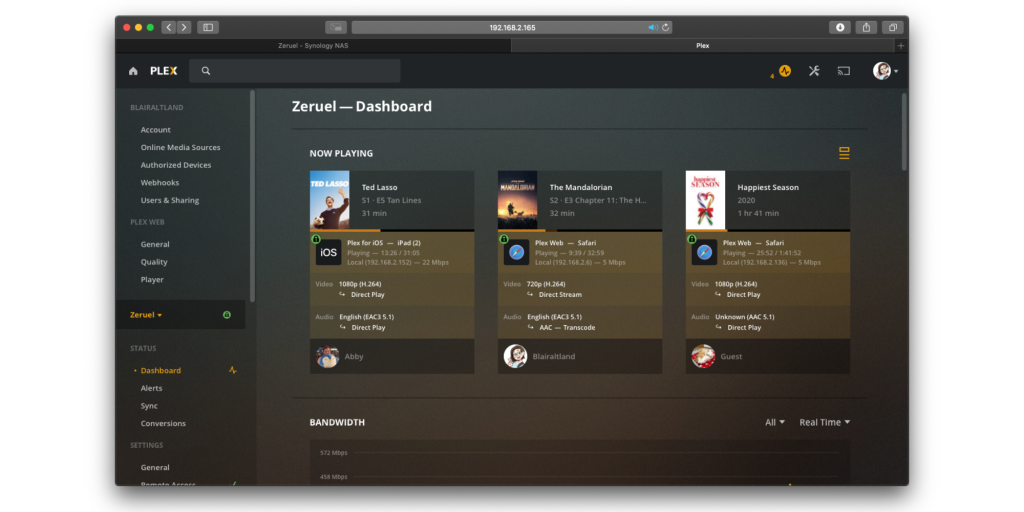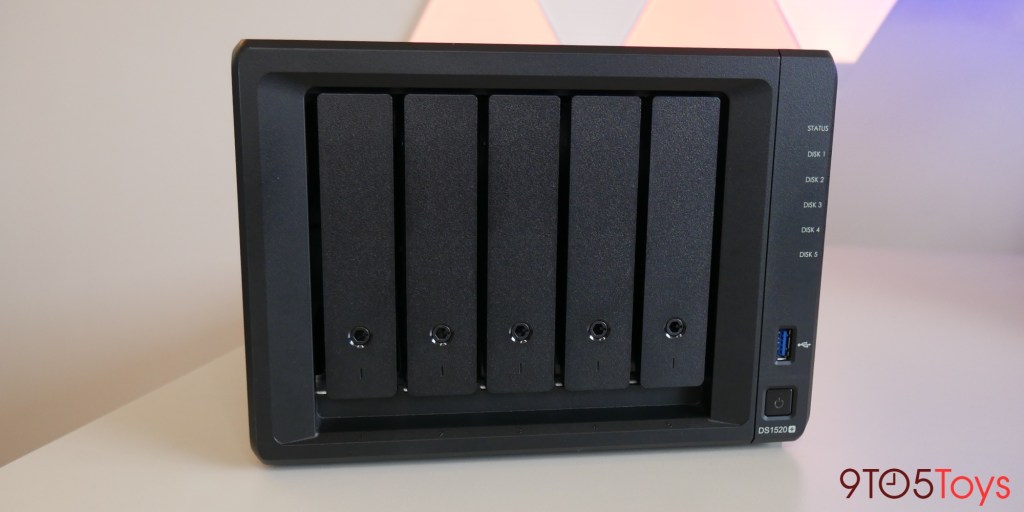 Buy now
Buy nowSynology has long been one of our favorites in the NAS game, and today we’re taking a look at one of its latest releases. Whether you’re thinking about securing your data in the new year or want to build out a capable Plex server, the new DS1520+ delivers high-end performance at a reasonable price point bolstered by five hard drive bays and four Gigabit Ethernet ports. Head below for all of the details as we review Synology’s DS1520+ NAS and put it to the test.
Synology 5-Bay DS1520+ NAS
We’ve seen plenty of new NAS from Synology throughout 2020, but its 5-Bay DS1520+ stands out as being a notable option for prosumers looking to get the most out of their at-home setup. Some of the brand’s more unwieldy units like the new DS1821+ deliver more horsepower than most enthusiasts would know what to do with. But where its latest 5-bay offering excels is with its high-end performance for the price.
With a similar design to pretty much any other Synology NAS, its DS1520+ delivers five hard drive bays that support up to 80TB of combined raw storage. There’s also two NVMe slots for configuring SSD cache to speed up performance, as well as upgradable RAM to complete the package.

Highlights
Aside from its under the hood performance that we’ll circle back on in a moment, the biggest draw of the Synology 5-Bay DS1520+ NAS is in its expanded I/O. There have been 5-bay NAS from the brand in the past, but this is one of the first times that Synology is introducing four Gigabit Ethernet ports at a price point like this.
Alongside better redundancy, the biggest improvement of having four networking slots is the ability to bond them together for a single connection. I’ve found in the past with pretty much every NAS I’ve put to the test, it’s easy to fill up the bandwidth and bottleneck speeds when downloading content, performing backups, and handling Plex server capabilities. So seeing the chance to finally have four Ethernet ports was certainly an eye-catching upgrade for my setup.

And in real-world performance, it definitely makes all the difference. While the biggest gains are to be had when multiple machines are accessing the NAS at a time, there’s still some notable boosts to prolonged transfers than with single or even double port alternatives in Synology’s stable.
And because of Synology’s impressive software, all you need is four Ethernet ports to plug this into instead of a specific switch that sports link aggregation. So even if you’re not rocking the most high-end network setup, the DiskStation operating system here provides plenty of features for power users on top of all of the perks and overall user-friendly design we’ve come to know and love.
Performance
All of the hardware enhancements aside, Synology has managed to deliver a pretty capable NAS this time around for the 5-Bay DS1520+. From my time with the NAS so far, performance certainly lives up to the price point and handles a wide variety of tasks with ease. Just about every NAS is a great option for configuring routine backups, but the Synology DS1520+ excels with transcoding support and much more.
Plex is arguably one of the main selling points of any NAS, and Synology has delivered on that this time around. Transcoding performance is about on par with other NAS in Synology’s stable at this price point, but the expanded I/O allows for even more content to be enjoyed simultaneously using direct play.

I was able to get around 10 direct plays on my network before performance started to take a hit. As for transcoding, the amount of concurrent streams is going to vary based on what quality the the content is and what the NAS will be converting it to. In my tests for this review, the Synology DS1520+ was able to handle three or four simultaneous transcodes at a time before stuttering. This was of course with Plex’s hardware transcoding enabled, so results will vary with this setting disabled.
As for read and write performance, I can back up Synology’s claim the DS1520+ can handle over 400MB/s transfers. That’s of course by maxing out the bandwidth on all four of its Gigabit Ethernet ports, but those using multiple machines to access content will surely benefit from the increased traffic. Otherwise, single-machine performance trends around 100MB/s, which is on par with what we’ve seen from other Synology NAS in the past.

gadgetnewsonline’ Take
Entering at $700, the Synology DS1520+ NAS we’re checking out in this review is certainly on the pricier side compared to other models from the brand. But from my use, there is absolutely enough power to back up the price tag for those who might need the added performance.
Plex usage, which is one of my go-to tests for the real-world performance of a NAS, met my expectations here. But where the Synology 5-Bay DS1520+ NAS really shines is the expanded I/O. Going back to a NAS with only two Ethernet ports, or even just a single one, is definitely a night-and-day experience if you’re working with large file transfers or looking to get one NAS that just does it all.

There are some areas where Synology would have made improvements here, though. While including 10GB Ethernet support out of the box would have surely raised the price, allowing an aftermarket NIC to be installed down the line would have gone a pretty big distance to help future-proof this NAS. Even if the four 1GB Ethernet ports work just fine now, the option to upgrade would have turned the Synology DS1520+ from a solid NAS for its price, to the best in its class by a wide margin.
Even so, it’s rare you find a NAS that’s as powerful and versatile as the DS1520+ is while still having such a user-friendly interface. If you’re looking to build out a home media server that’ll last you for years, centering everything around Synology’s 5-Bay DS1520+ NAS is certainly a worthwhile option.
Buy the Synology DS1520+ NAS featured in this review at Amazon and B&H
FTC: We use income earning auto affiliate links. More.







Comments